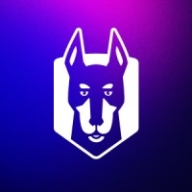
![Threat Stack Cloud Security Platform [EOL] Logo](https://images.peerspot.com/image/upload/c_scale,dpr_3.0,f_auto,q_100,w_64/o0no0it6ybl6satjcxomcblsgmd6.png)
Threat Stack Cloud Security Platform and Snyk are competitive products in cloud security and application security. Snyk appears to have a stronger position due to its comprehensive feature set that supports continuous security improvements, though Threat Stack offers competitive pricing and effective support.
Features: Threat Stack provides real-time threat detection, deep insights into cloud workload security, and intrusion detection. Snyk offers comprehensive vulnerability scanning across open source dependencies, container images, and infrastructure code, seamlessly integrating into the development lifecycle. Snyk’s emphasis is on integrating security within the development workflow and providing actionable insights for developers.
Room for Improvement: Threat Stack could enhance its integration capabilities with additional tools and expand its feature set to address a broader range of threats. Snyk might benefit from expanding its vulnerability database's scope and improving documentation for more advanced features. Additional partnerships and integrations would also enhance Snyk's utility in varied environments.
Ease of Deployment and Customer Service: Threat Stack is praised for its straightforward setup and robust cloud protection. Snyk's deployment model supports efficient integration within CI/CD pipelines and offers responsive customer support. Threat Stack focuses on a streamlined startup experience, while Snyk emphasizes ongoing improvements and developer-friendly interfaces.
Pricing and ROI: Threat Stack offers competitive setup costs with effective ROI through enhanced cloud security. Snyk requires higher initial investments but justifies costs with significant security improvements, integration capabilities, and long-term value, providing continuous risk mitigation and proactive security maintenance.
We could understand the implementation of the product and other features without the need for human interaction.
Their response time aligns with their SLA commitments.
Our long-standing association has ensured smooth communication, resulting in favorable support experiences and satisfactory issue resolution.
Snyk allows for scaling across large organizations, accommodating tens of thousands of applications and over 60,000 repositories.
It lacks the ability to select branches on its Web UI, forcing users to rely on CLI or CI/CD for that functionality.
As we are moving toward GenAI, we expect Snyk to leverage AI features to improve code scanning findings.
The inclusion of AI to remove false positives would be beneficial.
Snyk is less expensive.
After negotiations, we received a special package with a good price point.
Snyk is recognized as the cheapest option we have evaluated.
Our integration of Snyk into GitHub allows us to automatically scan codebases and identify issues, which has improved efficiency.
Snyk helps detect vulnerabilities before code moves to production, allowing for integration with DevOps and providing a shift-left advantage by identifying and fixing bugs before deployment.
I appreciate the UI. It is simple, fast, and I value the precision in the tests.

| Company Size | Count |
|---|---|
| Small Business | 20 |
| Midsize Enterprise | 9 |
| Large Enterprise | 21 |
| Company Size | Count |
|---|---|
| Small Business | 2 |
| Midsize Enterprise | 5 |
| Large Enterprise | 2 |
Snyk excels in integrating security within the development lifecycle, providing teams with an AI Trust Platform that combines speed with security efficiency, ensuring robust AI application development.
Snyk empowers developers with AI-ready engines offering broad coverage, accuracy, and speed essential for modern development. With AI-powered visibility and security, Snyk allows proactive threat prevention and swift threat remediation. The platform supports shifts toward LLM engineering and AI code analysis, enhancing security and development productivity. Snyk collaborates with GenAI coding assistants for improved productivity and AI application threat management. Platform extensibility supports evolving standards with API access and native integrations, ensuring comprehensive and seamless security embedding in development tools.
What are Snyk's standout features?Industries leverage Snyk for security in CI/CD pipelines by automating checks for dependency vulnerabilities and managing open-source licenses. Its Docker and Kubernetes scanning capabilities enhance container security, supporting a proactive security approach. Integrations with platforms like GitHub and Azure DevOps optimize implementation across diverse software environments.
Threat Stack Cloud Security Platform [EOL] offers robust security features including endpoint monitoring, rule customization, and integration capabilities, with easy connectivity to cloud services like Docker and AWS.
Threat Stack Cloud Security Platform [EOL] provides tools for enhancing security visibility across cloud infrastructure. It supports AWS and Docker integration, facilitating efficient threat detection and management. Users appreciate its capability to configure customizable alerts and monitor endpoints, sessions, API interactions, and cloud services. However, there are areas needing improvement, such as better serverless environment support and reduced alert frequency. The platform services smaller organizations by compensating for limited security resources with its comprehensive monitoring and auditing tools.
What are the key features?In specific industries, Threat Stack Cloud Security Platform [EOL] is utilized for its strength in monitoring cloud infrastructure and preventing unauthorized access. Organizations in fields where cloud operations are critical use it for regular audits and monitoring. Its capabilities in threat management are leveraged to maintain secure operations and compliance, especially where there is no dedicated security team.
We monitor all Container Security reviews to prevent fraudulent reviews and keep review quality high. We do not post reviews by company employees or direct competitors. We validate each review for authenticity via cross-reference with LinkedIn, and personal follow-up with the reviewer when necessary.